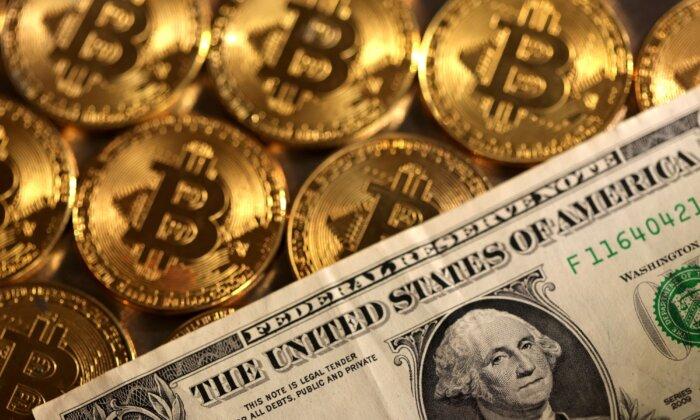Cryptocurrency markets are staging a rebound after a month-long decline wiped out more than $800 billion in total market value.
Bitcoin, the premier cryptocurrency controlling about 60 percent of the global market, fell below $84,000 for the first time since November. However, the recent selloff may have reached a bottom, as prices rebounded by nearly 3 percent on Feb. 27. Bitcoin returned above $86,000.
Still, the top cryptocurrency is poised to register a monthly decline of about 17 percent, adding to its year-to-date drop of 7 percent.
Ethereum, bitcoin’s sister crypto that maintains a 10 percent market share, also slumped this week, to less than $2,400. While Ethereum climbed 1 percent during the Feb. 27 session, it is on track to record a February loss of about 27 percent. Year to date, the digital token is down 30 percent.
Following the U.S. presidential election, bitcoin and other cryptocurrencies rallied to all-time highs, dubbed by market observers as the “Trump trade.” The increase was buoyed by enthusiasm over President Donald Trump’s pro-crypto policies.
Hacks, Memes, and Inflation
Momentum appeared to have faded in the past month as several events applied pressure on bitcoin and other digital assets.Bybit, one of the world’s largest crypto exchanges, suffered a Feb. 21 hack, during which more than $1.4 billion worth of crypto was stolen. Ben Zhou, the co-founder and CEO of the Dubai-based exchange, confirmed on social media platform X that the company is solvent and will “cover the loss.”
Noelle Acheson, a crypto analyst and author of the daily newsletter Crypto Macro, questioned if the hack contributed to the selloff.
Meanwhile, another potential driver of the recent weakness may have been what occurred in Argentina.
“This private project will be dedicated to encourage the growth of Argentina’s economy, funding small Argentine companies and ventures,” Milei wrote on X, which he later deleted.
The social media post raised the coin’s price to as high as $5, lifting its total market value to $4.5 billion. Hours later, it crashed to about $1, wiping out much of its value. The president called for an investigation into what transpired.
Trump’s trade agenda has also recently affected financial markets, with investors and consumers concerned that the new administration’s tariff plans could refuel inflation.

The University of Michigan’s February Consumer Sentiment Index’s one-year inflation outlook rose to 4.3 percent from 3.3 percent in January. Five-year inflation expectations also climbed to 3.5 percent from 3.2 percent.
In addition, the S&P Global Manufacturing and Services Purchasing Managers’ Indexes—monthly surveys highlighting the prevailing direction of these sectors—revealed elevated cost pressures.
If inflation remains above the Federal Reserve’s 2 percent target, the monetary authorities could keep interest rates higher for longer, potentially weighing on overall market sentiment.
Tom Essaye, president and founder of Sevens Research Report, says these comments verified what the financial markets already knew: The Fed has pressed the pause button.
“They reinforced what investors expect (namely that the Fed is on hold for the foreseeable future), but that does reinforce that rate cuts aren’t coming anytime soon, and the prospects of a rate hike should inflation continue to rebound isn’t out of the question,” Essaye said in a note emailed to The Epoch Times.
The next policy meeting of the Federal Open Market Committee will occur during March 18–19.







